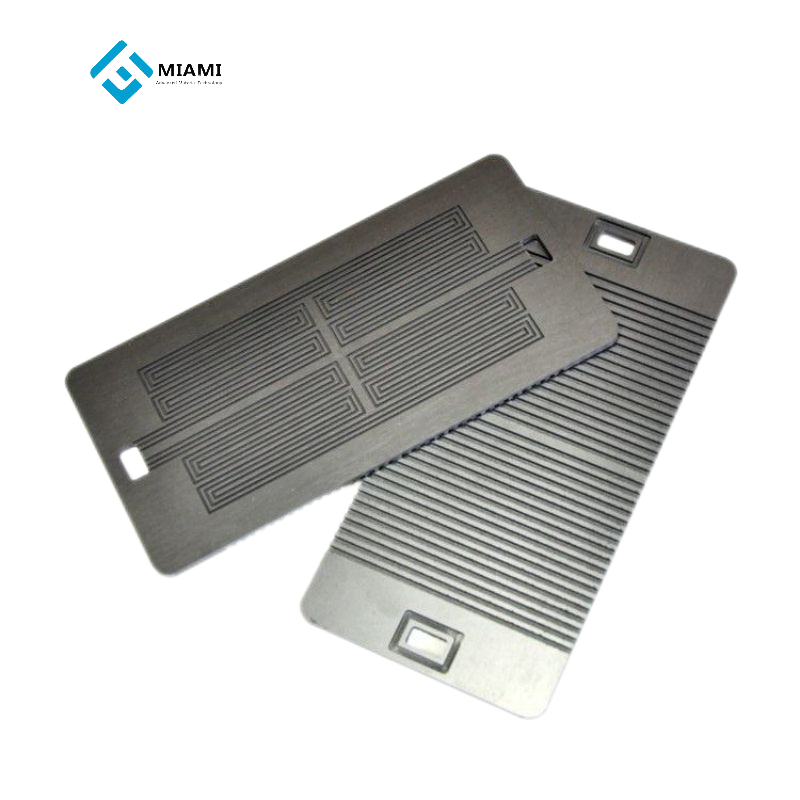The bipolar plate, also known as the collector plate, is one of the important components of the fuel cell. It has the following functions and properties: separating fuel and oxidizer, preventing gas penetration; Collect and conduct current, high conductivity; The flow channel designed and processed can evenly distribute the gas to the reaction layer of the electrode for electrode reaction. There are several rolling processes for graphite bipolar plates.
1, multi-layer plate rolling method:
The working process of multi-layer continuous rolling machine: the veneer is drawn out from the veneer winding rod, and the adhesive on both sides of the soil through the binder coating roller, and the winding roll and the veneer are combined to become a three-and-thick plate, and the gap between the rollers is rolled into a certain thickness. Then feed into the heater to heat and dry. Through the thickness control, roll, adjust the thickness to reach the specified size, and then send to the roasting device for roasting. When the binder is carbonized, it is finally pressed into shape with a pressure roller.
Using continuous rolling method, flexible graphite plate of 0.6-2mm thickness can be pressed, which is better than single-layer rolling machine, but due to the thickness of the plate will also bring the shortcomings of layered stripping of the plate, which will bring trouble to the use. The reason is that the gas overflow remains in the middle of the interlayer during pressing, which prevents the close bonding between the layers. The way to improve is to solve the problem of exhaust gas in the pressing process.
Single-layer plate rolling, although the pressure plate is smooth, but not too thick. When the molding is too thick, its uniformity and density are difficult to ensure. In order to make thick plates, multilayer boards are superimposed and pressed into multilayer composite boards. A binder is added between each two layers and then rolled. After forming, it is heated to carbonize and harden the binder. The multilayer plate rolling method is carried out on a multilayer continuous rolling machine.
2, single-layer plate continuous rolling method:
The structure of the roller consists of: (1) hopper for worm graphite; (2) Vibration feeding device; (3) Conveyor belt; (4) Four pressure rollers; (5) A pair of heaters; (6) roller for controlling sheet thickness; Rollers for embossing or patterning; (8) and roll; (9) Cutting knife; (10) Finished product roll.
This rolling method can press flexible graphite into sheets without any binder, and the whole process is carried out on special equipment equipped with roller rollers.
Working process: high purity graphite enters the feeding device from the hopper and falls on the conveyor belt. After the pressure roller rolling, forming a certain thickness of the material layer. The heating device generates high temperature heating to remove the residual gas in the material layer and to expand the unexpanded graphite one last time. Then the initially formed inverse material is fed into the roller that controls the thickness size and is pressed again according to the specified size in order to obtain a flat plate with uniform thickness and a certain density. Finally, after cutting with the cutter, roll up the finished barrel.
The above is the rolling molding process of graphite bipolar plate, I hope to help you. In addition, carbonaceous materials include graphite, molded carbon materials and expanded (flexible) graphite. Conventional bipolar plates are made of dense graphite and machined into gas flow channels. The graphite bipolar plate has stable chemical properties and small contact resistance with MEA.
Post time: Oct-23-2023


